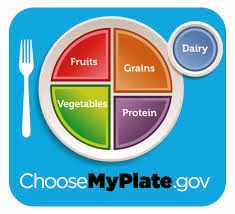I grew up on a small grape farm in rural New York . I learned that when I tell most
people that I grew up on a farm, the assumption is that we had cows, pigs, or
other farm animals. Not us. My dad enjoys growing grapes, but has no interest
in farm animals. He actually learned quite a bit about livestock at college in his Ag program at Cornell, and enough to know it was not the
life he wanted to live. He also had the grape farm in his family - end of story. So, just because I grew up on a farm, doesn't translate to knowing anything about farming animals. This hog tour was going to be awesome.
I will never forget my 45-minute ride home on my school bus.
There were a couple of dairy farms on the bus route. Picture a bus full of
mostly elementary and middle school kids, on a warm day with the bus windows
open, passing those farms ripe with fresh piles of manure sitting out in the
barnyard. The whole bus exploded with a loud and raucous scream of
E-EEEE-EE-EEE-EEE-WWWWWW. The bus driver was surely caught between a smirk and
deciding when to yell out for us to settle down. He, himself, was also a dairy
farmer. I might add, the only real working dairy barn I’ve ever been to!
When we got a message a few days before our visit to the hog
farm, reminding us that we were going to be in hog facilities and that there is
an odor, so plan our clothing accordingly, it reminded me not only of those
days passing by the dairy farms, but also to my college nights at the bars and the
smoke-and-beer-stink pile of laundry on the floor the next morning, the odor of
which had permeated my entire dorm room. I had to decide what to wear. Farm
clothes, a.k.a. play, gardening, work, painting clothes. I’m no stranger to
farm clothes, but they aren’t the clothes you wear to “look your best.” I’ve
learned we get photographed a lot on these trips.
I opted for the farm clothes – rubber boots, jeans,
turtle-neck, an extra shirt underneath for some warmth, and a fleece pullover,
all easy to wash – and I am glad I did. It was a cool low-40 degrees with a
little breeze. We were mostly inside a building called “the shop,” but we had a
short walk to tour the inside of the hog barns. There was no smell of farm
animals outside in the fresh air, but once we crossed the threshold of the door
leading into the barn, OOUU-WEEEE. It was strong. The odor of pig manure is
poignant, like the odor of ammonia, but not. None of the moms had to leave from
the smell, but I can imagine on a hot and humid day in July that is not where I
would want to be. Interestingly, I did forget about the smell after about 5
minutes in the barn.
And the odor permeates. I did not play in the manure in a pit below our feet, or
touch anything, except I did hold a cute piglet, but she did not have an odor.
I just simply walked through the barn for maybe 30 minutes.
We left the farm with a lot of knowledge, photos, videos,
some fresh pork, AND pig odor attached to our clothes, skin and hair!
It wasn’t terrible, but I could smell it and knew it was
there. When I got home, I showered the odor off my body and out of my hair and
put all my clothes in the laundry. I didn’t think the folks at the party I was
attending in a few hours would appreciate the odor of where I had been earlier
that day. Note to self: pig odor permeates!
...Lots more on pig manure in a future post!

